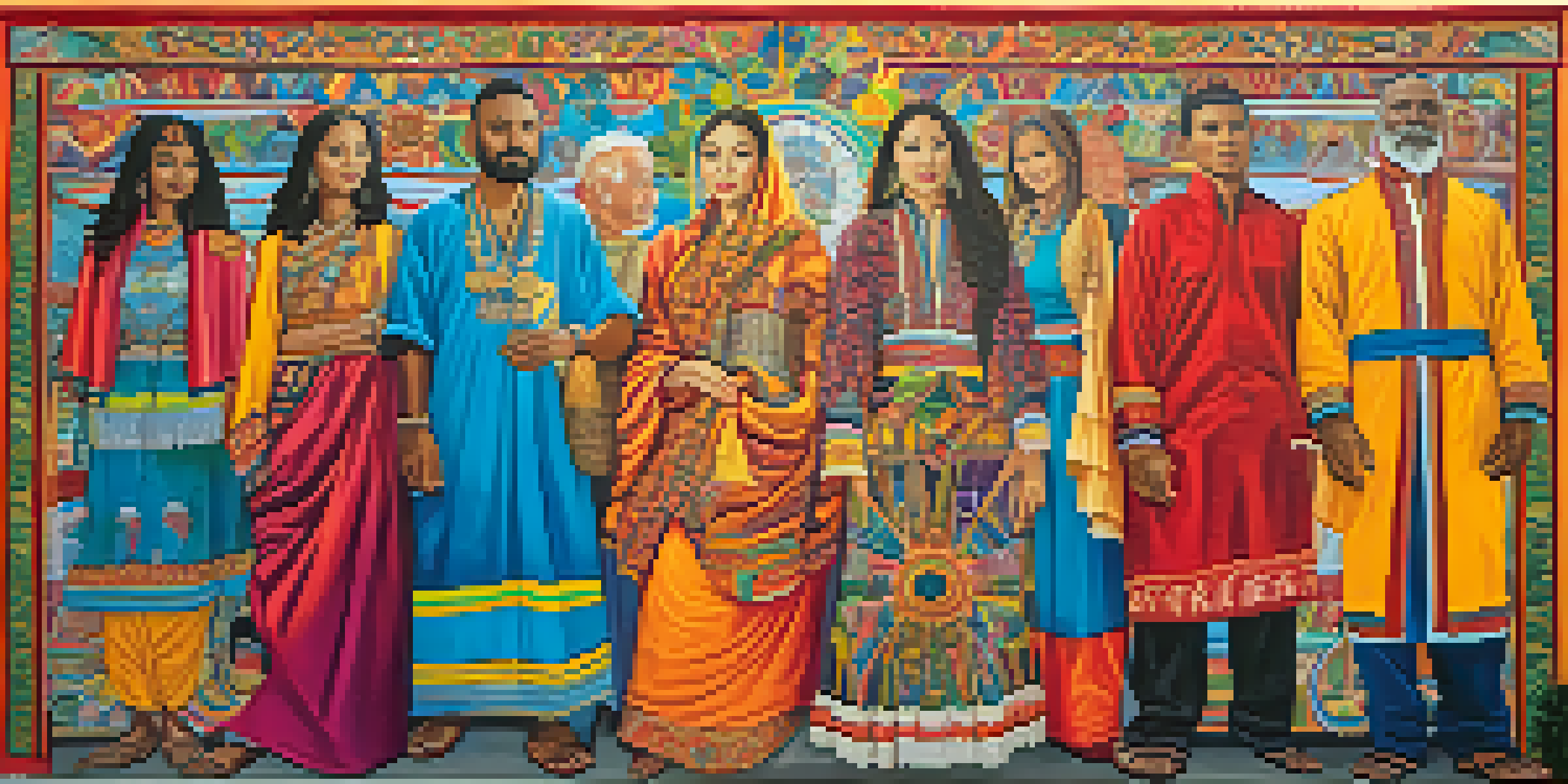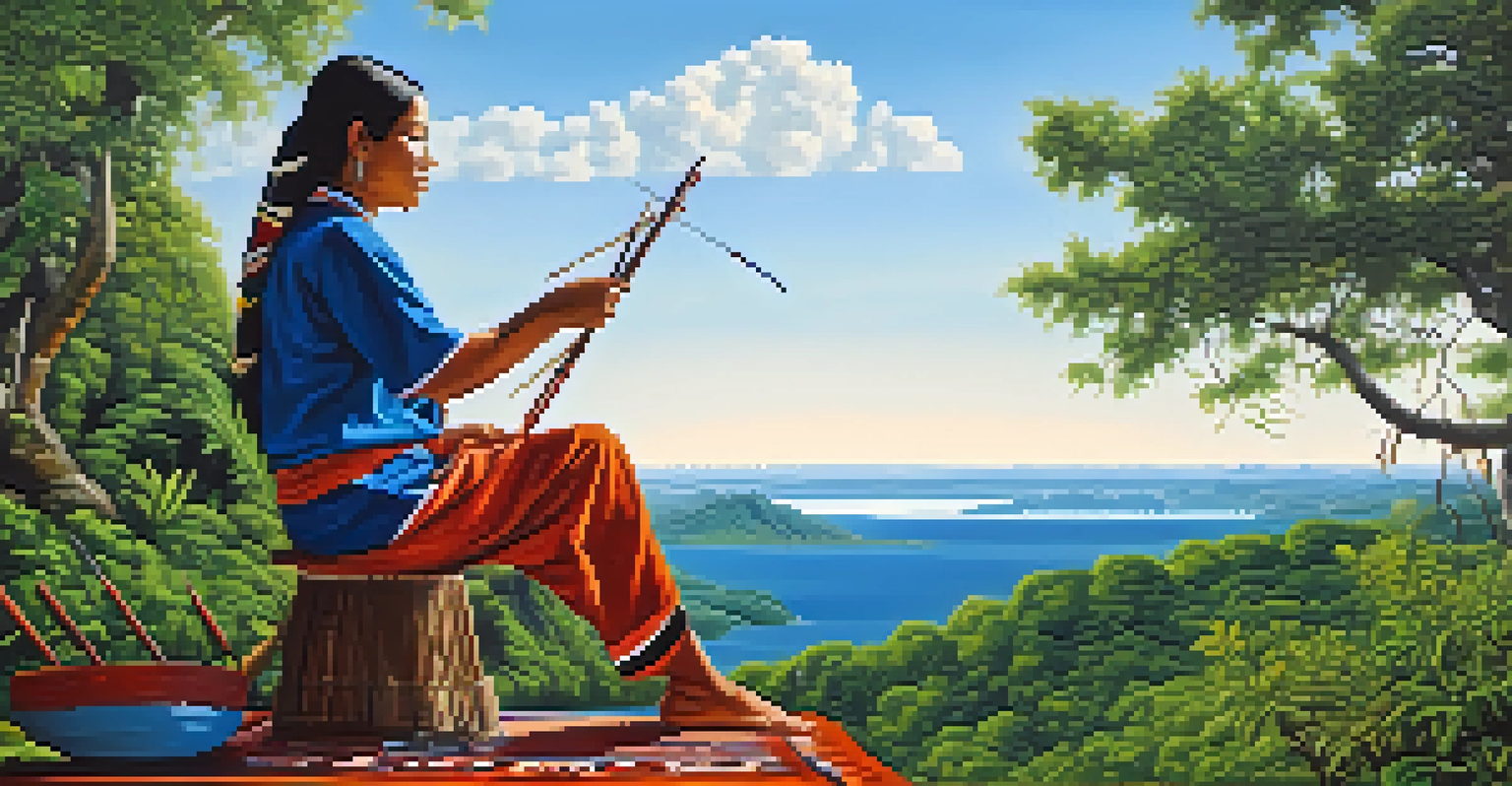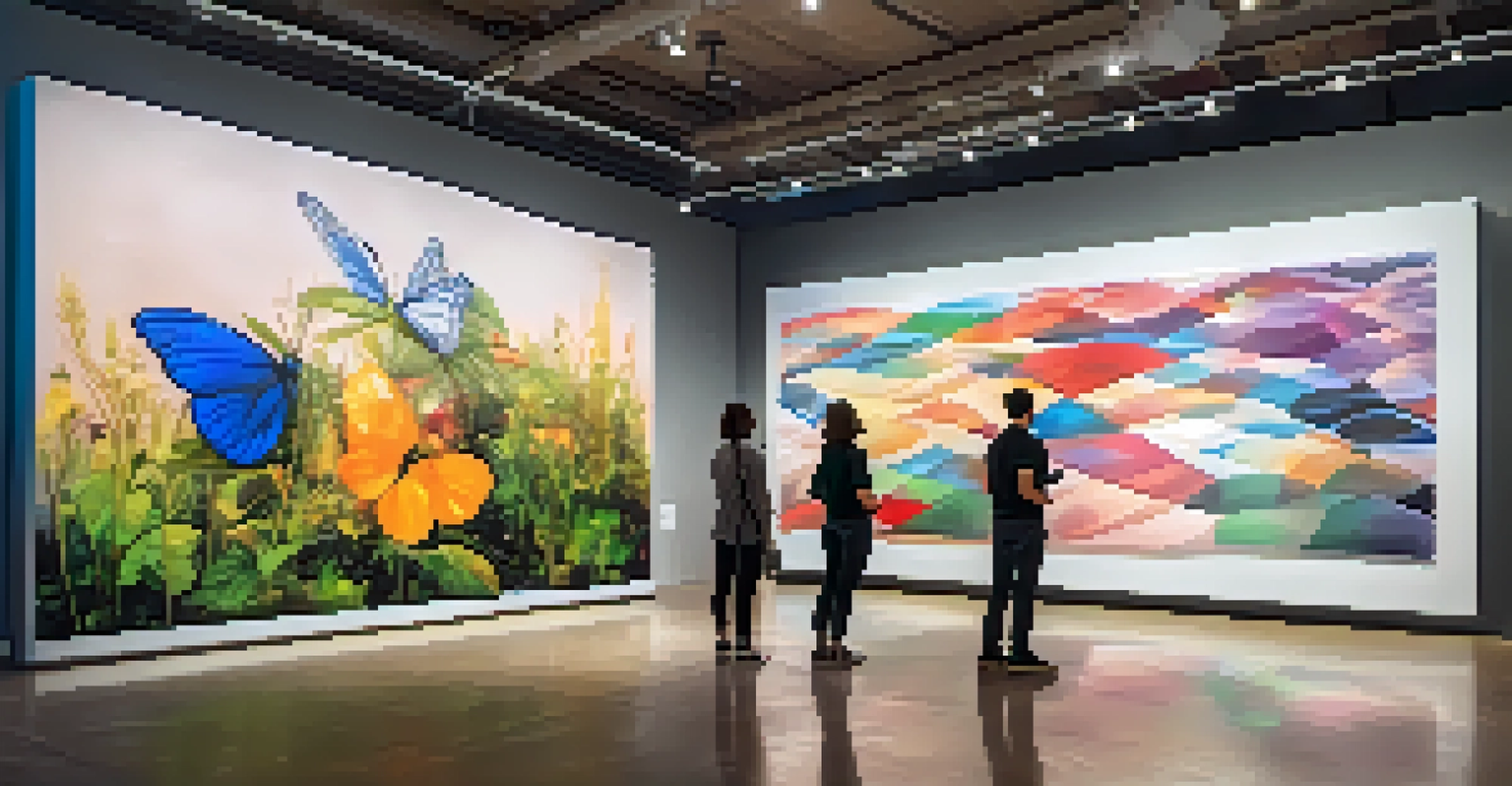Visual Storytelling: Art's Role in Shaping Cultural Beliefs

Understanding Visual Storytelling and Its Importance
Visual storytelling is the art of conveying narratives through images, videos, and other visual mediums. It captures attention quickly and can evoke emotions that words alone may struggle to express. This form of storytelling transcends language barriers, enabling people from various backgrounds to connect with shared experiences.
A picture is worth a thousand words.
Art, in its many forms, acts as a powerful vehicle for visual storytelling. Whether it's through paintings, photography, or film, artists can depict complex cultural narratives that resonate with audiences. By illustrating cultural beliefs, visual art not only informs but also inspires conversations about identity, history, and values.
Related Resource
The impact of visual storytelling extends beyond individual understanding; it shapes collective beliefs and societal norms. As we consume visual art, we absorb the stories and messages that influence our perspectives, further highlighting the importance of art in driving cultural change.
Historical Context: Art as a Cultural Mirror
Throughout history, art has been used as a reflection of societal values and beliefs. From ancient cave paintings depicting daily life to Renaissance masterpieces that explored humanism, art has always mirrored the cultural zeitgeist. These artworks serve as historical documents, offering insights into the thoughts and values of past societies.

For example, the works of famous artists like Frida Kahlo and Diego Rivera highlight the struggles and triumphs of Mexican culture. Their visual narratives not only preserved cultural identity but also challenged prevailing societal norms. This illustrates how art can be a powerful tool in shaping and redefining cultural beliefs.
Visual Storytelling Connects Cultures
Through images and videos, visual storytelling transcends language barriers, fostering connections and shared experiences among diverse audiences.
As we analyze historical art, we can better understand the evolution of cultural beliefs over time. The interplay between art and society reveals how visual storytelling has consistently influenced and reflected the human experience.
Modern Media: The Evolution of Visual Storytelling
In today’s digital age, visual storytelling has taken on new forms through social media, film, and graphic design. Platforms like Instagram and TikTok allow artists to share their narratives with a global audience instantly. This democratization of art means that anyone with a smartphone can contribute to the visual storytelling landscape.
Art is the most beautiful of all lies; it is a means of expression that can transcend language and connect us all.
Moreover, modern media has expanded the ways in which cultural stories are told. Animation, virtual reality, and interactive media provide immersive experiences that engage viewers on multiple levels. These advancements allow for a richer exploration of cultural narratives, making them more relatable and impactful.
Related Resource
The rise of modern media also presents challenges, such as the potential for cultural appropriation and misrepresentation. As artists navigate this new landscape, it's essential to consider the ethical implications of visual storytelling and ensure that diverse voices are represented authentically.
Cultural Identity: Art as a Means of Expression
Art serves as a vital means of expressing cultural identity, allowing individuals and communities to showcase their heritage and experiences. Through visual storytelling, artists can communicate their unique perspectives, fostering a sense of belonging and pride. This expression is particularly important in marginalized communities, where art can reclaim narratives and challenge stereotypes.
For instance, Indigenous art often reflects the deep connection to land, spirituality, and community. By sharing these visual stories, Indigenous artists educate others about their culture while preserving traditions for future generations. This highlights the role of art as a bridge between cultures, promoting understanding and respect.
Art Reflects and Shapes Society
Throughout history, art has mirrored societal values and beliefs, influencing cultural change and challenging norms.
Furthermore, visual storytelling can also challenge preconceived notions about cultural identity. By presenting diverse narratives, artists encourage audiences to question stereotypes and engage with cultures on a deeper level, fostering empathy and appreciation for differences.
Art in Activism: Visual Storytelling for Social Change
Visual storytelling has long been a tool for activism, amplifying voices and addressing social issues. Artists use their craft to raise awareness about injustices, provoke thought, and inspire action. Through powerful imagery and narratives, art can mobilize communities and drive social change.
A compelling example is the use of murals in urban areas, which often depict messages of resistance and hope. These public artworks create a dialogue around important social issues, making them accessible to a broader audience. As viewers engage with these visuals, they are prompted to reflect on the cultural beliefs that underpin societal challenges.
Related Resource
Moreover, social media has transformed the landscape of activist art, allowing movements to spread quickly and reach diverse audiences. The viral nature of visual content can create a sense of urgency and solidarity, highlighting the role of art in contemporary activism.
Global Perspectives: Cross-Cultural Visual Storytelling
Visual storytelling is not confined to a single culture; it is a global phenomenon that embraces diverse perspectives. Artists from different backgrounds share their narratives, enriching the global tapestry of cultural beliefs. This cross-cultural exchange fosters understanding and appreciation for the unique stories that shape our world.
For instance, the popularity of international film festivals showcases the power of visual storytelling in highlighting cultural diversity. Films from various countries offer insights into different ways of life, encouraging audiences to empathize with experiences outside their own. This exposure can challenge stereotypes and promote cultural exchange.
Modern Media Expands Artistic Voices
The rise of digital platforms democratizes art, allowing diverse narratives to emerge while also raising ethical concerns about representation.
Additionally, collaborations between artists from different cultures can lead to innovative storytelling approaches. By blending techniques and themes, these partnerships create a dynamic dialogue that reflects the interconnectedness of our global society.
The Future of Visual Storytelling in Cultural Discourse
As technology continues to evolve, the future of visual storytelling holds exciting possibilities for cultural discourse. Emerging tools like augmented reality and artificial intelligence can transform how narratives are created and experienced. This innovation opens doors for more immersive and interactive storytelling, allowing audiences to engage with cultural beliefs in new ways.
Moreover, the growing emphasis on diversity and inclusion in the arts ensures that a broader range of voices is heard. As artists from various backgrounds share their stories, we can expect a richer exploration of cultural beliefs that reflect the complexities of modern society. This shift can lead to a deeper understanding of what it means to be part of a global community.

Ultimately, visual storytelling will continue to play a crucial role in shaping cultural beliefs, reflecting the ever-changing landscape of human experiences. By embracing innovation and inclusivity, we can create a future where art fosters understanding, empathy, and connection across cultures.